If you’ve never eaten gulab jamun before, you’re in for a treat! If you have, and love them as much as I do, then you know everyone has a favourite version. This is mine! The way my Mom makes them and are basically the only ones I ever want to eat. There is very little that can go wrong when the words ‘deep-fried’ and ‘sugar’ are in the same sentence and gulab jamun are living proof of that. A Diwali essential, made with a milk-powder based dough, fried in ghee and left to soak in a saffron-y, cardamom-y, sugar syrup. They only get better after a couple of days and so if they aren’t polished off as soon they’re ready, these are a great make-ahead dessert for your festive table!

After learning to make these pumpkin gharge, gulabjamun were on my list while my Mom was visiting. As with pretty much all Indian sweets, getting these absolutely right the first time isn’t a guarantee but it’s not impossible. There are some things to keep in my mind and some things to do by instinct and they actually come together quicker than you’d think.

They’re perfectly soft and moist, last for days in the fridge and while I like to eat them warmed up, they’re actually delicious cold from the fridge too. The cardamom shines through, the sugar syrup soaks in but doesn’t make the gulab jamun cloyingly sweet (the dough itself is unsweetened) and while you can fry them in oil, ghee takes them to another level, so I highly recommend it!

I hope you enjoy these! Have a lovely Diwali 🙂
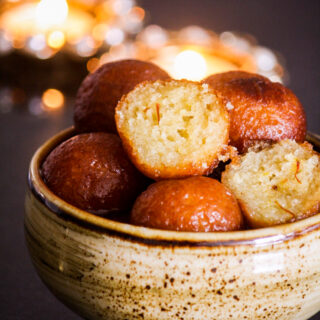
Gulab Jamun
Ingredients
For the sugar syrup
- 3 cups water (750 ml)
- 2 and 1/2 cups sugar (500 gms; regular white granulated sugar)
- 7 to 8 cardamom pods, peeled and crushed into a powder
- Big pinch of saffron strands
For the gulab jamun dough
- 3 tbsps all-purpose flour
- 3 tbsps semolina (sooji rawa)
- 2 cups milk powder (260 gms; I used Nestle)
- 1/4 tsp baking soda
- 1/2 cup plain curd/yoghurt (115 gms)
- Ghee as needed for frying (I used about 300 gms)
Instructions
- First make the sugar syrup. Combine the water and sugar in a large pot on medium heat and bring it to a boil, stirring occasionally to make sure the sugar dissolves completely. Simmer for about 5 minutes more and it will look less watery and more syrupy. This is a simple syrup, not one that should reach a thread consistency.
- Add the powdered cardamom and saffron, stir and take the pot off the heat. Let it rest at room temperature. It shouldn't cool down completely, the syrup needs to be slightly warm before you add the gulab jamun to it.
- Now make the dough. In a bowl, combine the flour, semolina, milk powder and soda. Stir well, then add the yoghurt a little at a time. The dough will feel sticky at first but will come become easier to handle as the semolina soaks up the moisture. If it feels too sticky, dab a little ghee onto your palms. Gently knead the mixture and bring it together into a soft dough.
- Cover the dough with a damp cloth touching its surface and let it rest for 15 minutes. In the meantime, heat the ghee in a sturdy wok or kadhai, on low heat.
- Roll the dough into 20 to 22 small balls, making sure they're completely smooth to ensure they don't break while they fry. Pinch off a tiny piece of dough and drop it into the hot ghee. If it comes up quickly, you can start frying.
- Carefully add 3 to 4 gulab jamun at a time into the ghee (keep the rest covered with the damp cloth), depending on the size of your kadhai (see photos below). Fry on low heat till brown but not dark, gently moving them around often for even browning.
- Take them out using a slotted spoon, draining off any excess ghee and then transfer to a plate to cool for a few minutes. Add them to the warm syrup to let them soak. Every once in a while, gently stir them around so that they soak evenly.
- Once the gulab jamun have soaked for a couple of hours, they're ready to eat. But they do taste better the next day so I recommend waiting! Store in the fridge for about 10 days. Reheat individual portions, or eat them cold from the fridge, no judgement. Happy Diwali!
Notes

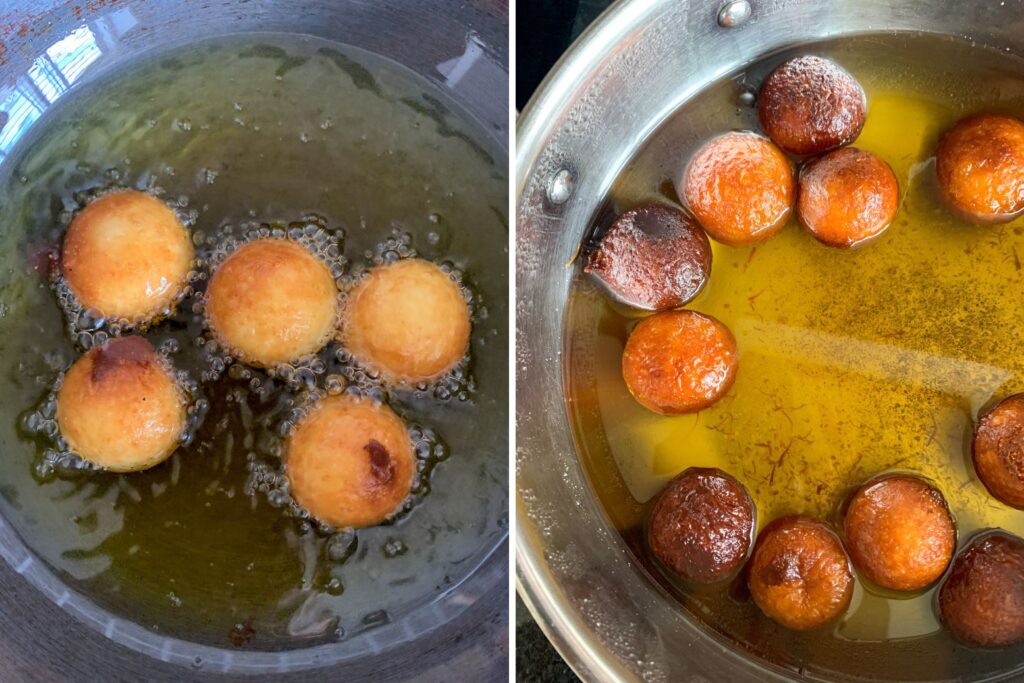

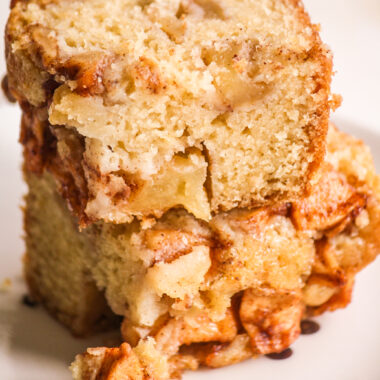





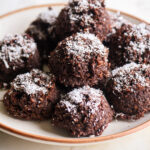

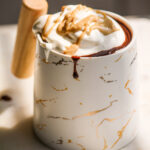




Pingback: Bee Sting Bars